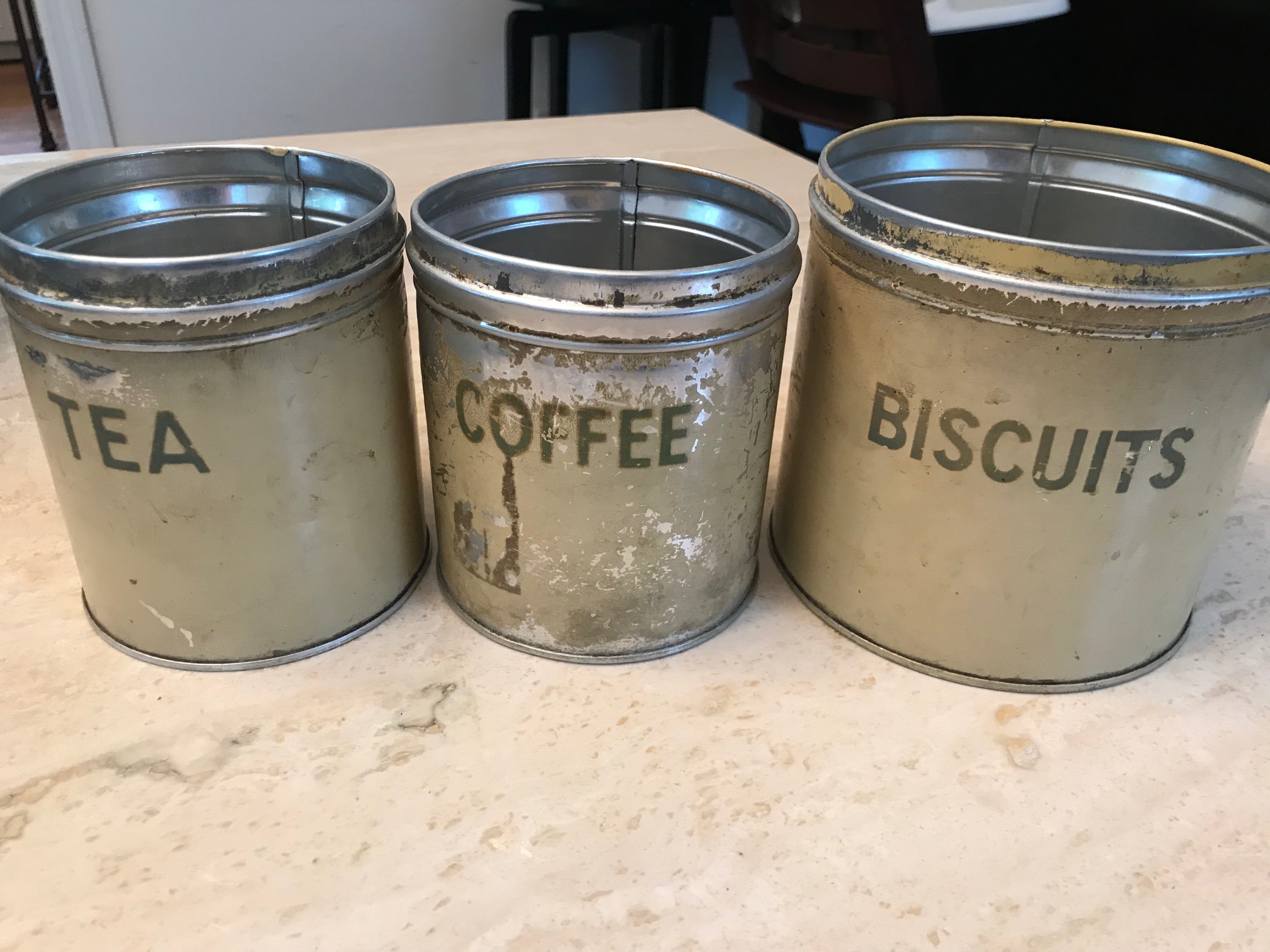XRF Test Results For Vintage WWII Era Coffee, Tea & Biscuit Tins.
When testing the World War II era food storage tins (using XRF technology) I found that they were painted with high lead paint.
Please take a close look at the photo (below) and see how much of the paint has worn off of these canisters over the years.
To learn more about XRF testing, click here.
I did several readings for these tins and found the following results:
- Lead (Pb): 2,272 +/- 266 ppm – Reading One
- Lead (Pb): 1,671 +/- 172 ppm – Reading Two
- Lead (Pb): 2,945 +/- 199 ppm – Reading Three
- Mercury (Hg): Negative/ Non-Detect
- Arsenic (As): Negative/ Non-Detect
- Cadmium (Cd): Negative/ Non-Detect
Two of the readings were also positive for Chromium:
- Chromium (Cr): 2,586 +/- 943 ppm – Reading One
- Chromium (Cr): 3,321 +/- 1,292 ppm – Reading Two
No other metals were detected.
To see more items I have tested with an XRF instrument, click here.
I personally would not have ANYTHING like this in my home and I especially would not use it for any kind of food storage. I would give this a “Grade F”.
Thank you for reading and for sharing my posts.
Please let me know if you have any questions.
Tamara Rubin
#LeadSafeMama
If you would like to make a contribution in support of my independent consumer goods testing, click here.
Never Miss an Important Article Again!
Join our Email List




Have you found any good food storage canisters for flour, sugar, etc?
Hi Diana,
hmmm – let me get back to you with a link or two!
Thanks for commenting!
Tamara
I’m looking for a storage canister to keep my coffee air tight. I like the stainless steel ones and the ceramic ones. I know you don’t recommend that water remains in a stainless water bottle over night or to keep anything acidic in stainless. Would the same apply to whole bean or ground coffee? Would ceramic canisters contain unwanted metals?